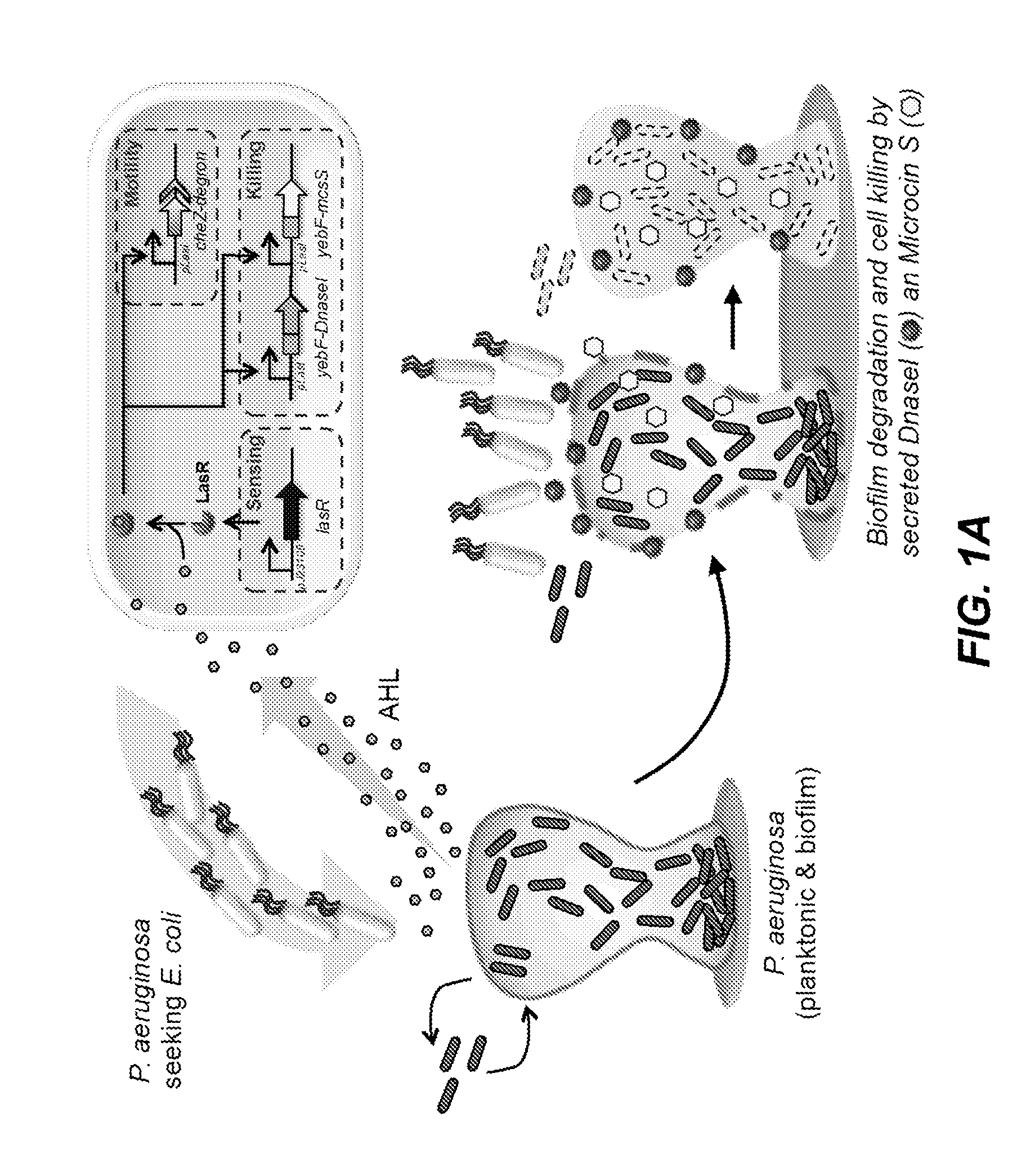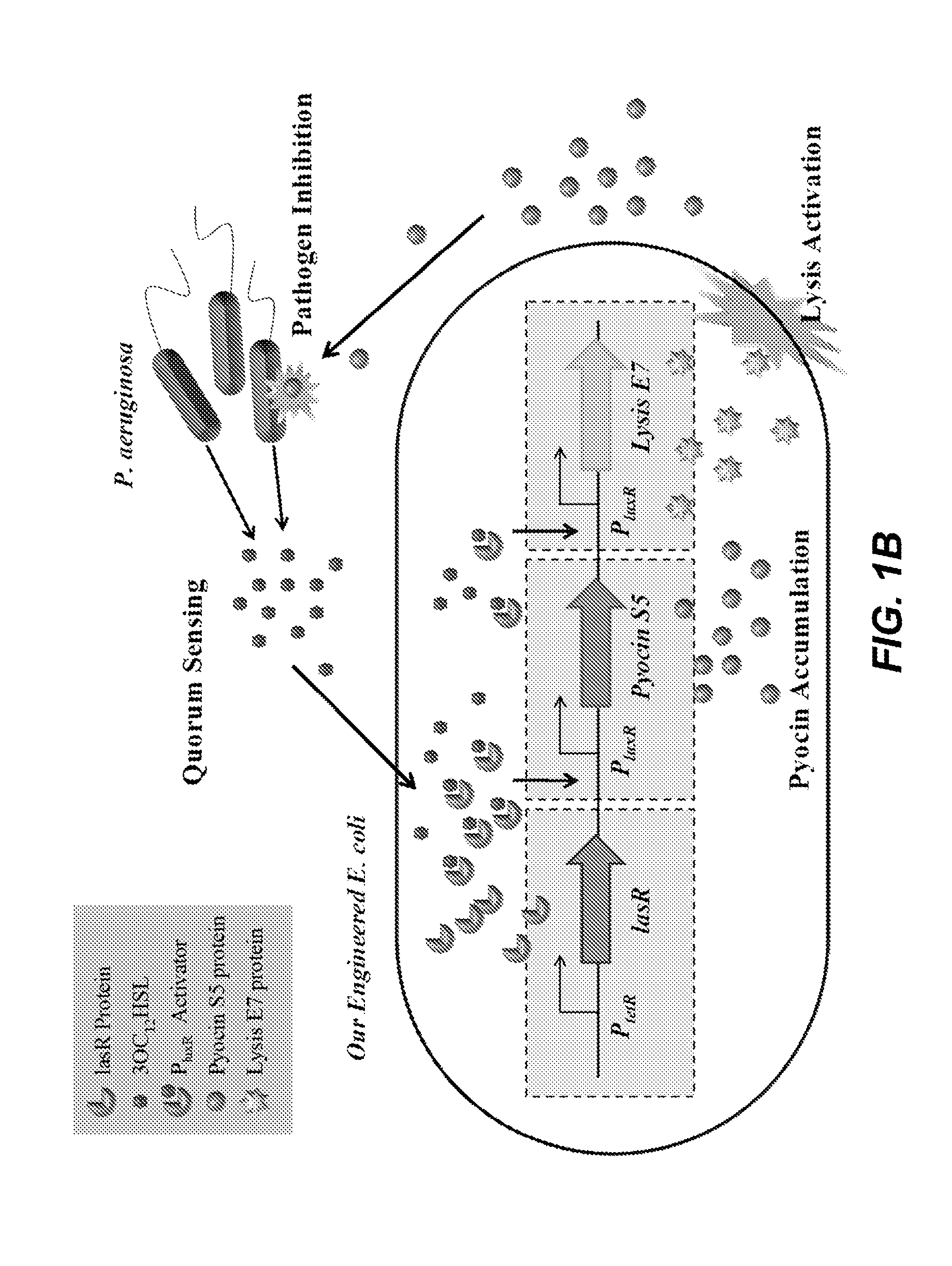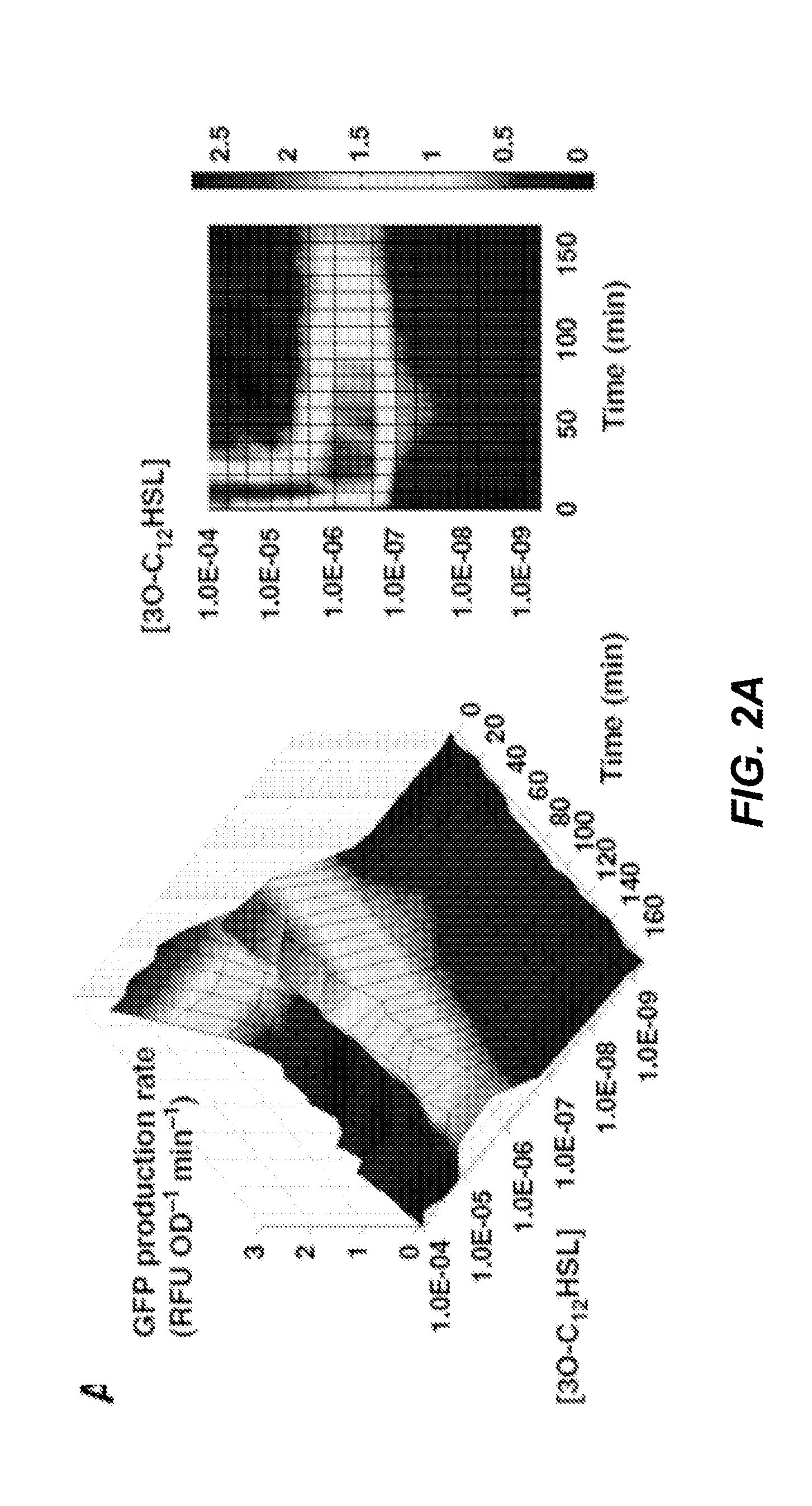Isolated nucleotide molecule and method of sensing and killing of pathogenic microorganism
a pathogenic microorganism and nucleotide molecule technology, applied in the field of engineered microorganisms, can solve the problems of unexplored synthetic biology to develop new strategies for tackling infectious diseases, unspecific killing of bacteria, and upseting the healthy human microbiome,
- Summary
- Abstract
- Description
- Claims
- Application Information
AI Technical Summary
Benefits of technology
Problems solved by technology
Method used
Image
Examples
example 1
Detection of Naturally Secreted Quorum Sensing Molecules by the P. Aeruginosa Cells and Biofilm as Determined by the GFP Reporter Protein
[0106]To verify the response of QS device against the natively expressed quorum sensing molecule (N-Acyl homoserine lactone; AHL), pE8k-pLasI-GFP transformed E. coli was co-cultured with synthetic AHL, culture supernatant or mature biofilm of P. aeruginosa cells and assayed for GFP expression. The resulting GFP fluorescence in response to 1000-fold diluted supernatant (OD 1.0) was equivalent to ˜10-8M AHL (FIGS. 9A-9D). Therefore, it can be estimated that the concentration of AHL present in supernatant is as high as 10-5M. This validated the sensitivity of the QS device for activating and responding (downstream expression) to the presence of P. aeruginosa (PAO1) cells at even low density.
example 2
Expression and Secretion of Antimicrobial Peptide Microcin S Upon the Detection of Quorum Sensing Molecules Naturally Secreted by P. Aeruginosa
[0107]Microcin S (MccS) is antimicrobial peptide that has shown a killing efficiency against a wide range of Gram-negative microbes (Zschüttig et al, 2012). Its expression in E. coli was first characterized (FIG. 10a). The bactericidal activity of MccS against P. aeruginosa (PAO1) was demonstrated by incubating P. aeruginosa (PAO1) with a range of concentrations of purified MccS (FIGS. 10a and 10b). For each growth assay, the change in OD600 during exponential growth phase was compared to the corresponding change in the control. Although the MccS was identified in other study (Zschüttig et al, 2012), its highly effective bactericidal activity against P. aeruginosa (PAO1) is demonstrated in this study for the first time, exhibiting an IC50 of 14.7 μg / mL.
[0108]Secretion of MccS was promoted by the fusion of a secretion tag, YebF, to the N-term...
example 3
Targeted Cell Killing by the Secreted Antimicrobial Peptide, Microcin S Upon the Detection of Quorum Sensing Molecules Naturally Secreted by P. Aeruginosa
[0109]Further, cell killing by the MccS secreted by the reprogrammed E. coli has been verified by Live / Dead cell viability assay (FIG. 12a). P. aeruginosa (PAO1) cells treated with YebF-MccS showed significant proportion of cells stained with PI dye indicating cell death, whereas the cells treated with the control supernatant were mostly stained with SYTO 9 dye, which denotes that most cells are viable. Therefore, the extracellular medium containing secreted YebF-MccS remained active and caused significant inhibition against P. aeruginosa (PAO1) cell growth.
[0110]To further verify whether the killer cell construct could autonomously sense the presence of P. aeruginosa (PAO1) cells to initiate cell-killing, co-culture of the YebF-MccS secreting E. coli with P. aeruginosa (PAO1) was set up. P. aeruginosa (PAO1) constitutively expres...
PUM
| Property | Measurement | Unit |
|---|---|---|
| dissociation constant | aaaaa | aaaaa |
| time | aaaaa | aaaaa |
| time | aaaaa | aaaaa |
Abstract
Description
Claims
Application Information
 Login to View More
Login to View More - R&D
- Intellectual Property
- Life Sciences
- Materials
- Tech Scout
- Unparalleled Data Quality
- Higher Quality Content
- 60% Fewer Hallucinations
Browse by: Latest US Patents, China's latest patents, Technical Efficacy Thesaurus, Application Domain, Technology Topic, Popular Technical Reports.
© 2025 PatSnap. All rights reserved.Legal|Privacy policy|Modern Slavery Act Transparency Statement|Sitemap|About US| Contact US: help@patsnap.com



